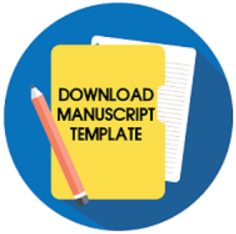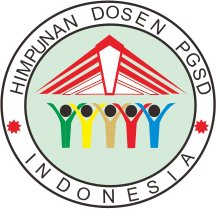ANALISIS KUALITAS BSE DAN NON-BSE SAINS SD DENGAN SISTEM PENILAIAN BUKU TEKS SAINS
Downloads
Penelitian ini bertujuan untuk mendeskripsikan perbandingan kualitas Buku Sekolah Elektronik (BSE) dengan non-BSE mata pelajaran sains untuk sekolah dasar. Subjek dalam penelitian ini adalah empat buah BSE sains SD, dan empat buah buku sains SD non-BSE. Instrumen dikembangkan dengan merujuk pada Science Textbook Rating System yang dibuat oleh Collette & Chiapetta, dan grafik keterbacaan Fry. Analisis data yang dilakukan dalam penelitian ini menggunakan fasilitas program SPSS 17.0 for Windows, untuk menguji apakah terdapat perbedaan kualitas antara buku sains BSE dan non-BSE untuk sekolah dasar. Hasil penelitian menunjukkan hasil uji-t sebesar 0,564 dengan t-tabel sebesar 2,00 pada taraf signifikansi 5%. Berdasarkan nilai tersebut, disimpulkan bahwa hipotesis awal dapat diterima. Hasil dari penelitian ini menyimpulkan bahwa tidak ada perbedaan kualitas antara buku sains BSE dan non-BSE untuk sekolah dasar.
Kata Kunci: kualitas, BSE, non-BSE, buku teks
AN ANALYSIS OF THE QUALITY OF BSE AND NON-BSE SCIENCE TEXTBOOKS FOR ELEMENTARY SCHOOLS WITH SCIENCE TEXTBOOKS ASSESSMENT SYSTEM
Abstract
This study aims to describe the comparison of the quality of Buku Sekolah Elektronik (BSE) with non-BSE science textbooks for elementary schools. The subjects of this study were four BSE science textbooks for elementary schools, and and four non-BSE science textbooks for elementary schools. The instruments used in this study consisted of a questionnaire compiled by the researcher with reference to the Science Textbook Rating System made by Collette & Chiapettas, and Fry's readability graph. The data were analysed using SPSS 17.0 for Windows, to know if there is any difference of quality between BSE and non-BSE science textbooks for elementary schools. The Technique of independent samples t-test shows the value of the T-test is 0.564 with t-table being 2.00 and the significance level of 5%. Based on that value, it can be concluded that the hypothesis is accepted. Therefore this study concludes that there is no difference in quality between the BSE and non-BSE science textbooks for elementary schools.
Keywords: quality, BSE, non-BSE, textbooksCollette, A. T. & Chiappetta, E. L. (1994). Science instruction in the middle and secondary schools. New York: Macmillan.
Dananjaya, Utomo. (2012). Salah konsep buku teks. Diakses tanggal 21 Oktober 2012 dari http:indoneisabuku.com
Depdiknas. (2005). Peraturan Menteri Pendidikan Nasional R1 Nomor 11, Tahun 2005, tentang Buku Teks Pelajaran. Jakarta: Depdiknas
Fernandez, Daniel dkk. (2011). Survei penggunaan buku teks dari penerbit swasta non-BSE. Universitas Muhammadyah Prof. Dr. Hamka
Hasan, Ansary & Esmat Babaii. (2002). Universal characteristics of EFL/ESL textbooks: A step towards systematic textbook evaluation. The Internet TESL Journal, Vol. VIII, No. 2, February 2002.
Lestari, Ika. (2013). Pengembangan bahan ajar berbasis kompetensi. Jakarta: Akademia Permata.
Musaddat, Syaiful. (2013). Pendidikan bahasa dan sastra Indonesia kelas tinggi. Mataram: Cerdas.
Wibowo, Agus Mukti. (2012). Peningkatan pemahaman konsep sains di madrasah ibtidaiyah melalui perbaikan bahan ajar. Jurnal UIN Maliki Malang Vol.4 No. 2.
The copyright of the received article shall be assigned to the journal as the publisher of the journal. The intended copyright includes the right to publish the article in various forms (including reprints). The journal maintains the publishing rights to the published articles.

Jurnal Prima Edukasia by http://journal.uny.ac.id/index.php/jpe/index is licensed under a Creative Commons Attribution-ShareAlike 4.0 International License.


























